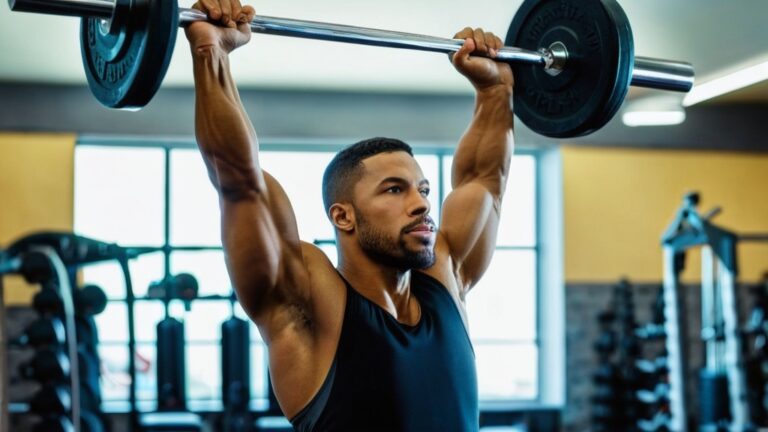Periodisation refers to the systematic planning of athletic training. It involves dividing training into specific phases to optimize performance and recovery. For men over 50, understanding periodisation becomes crucial.
Age-related changes in muscle mass, recovery time, and overall health necessitate a tailored approach. Older athletes often face unique challenges. These include slower recovery rates and increased injury risk.
Therefore, a well-structured periodisation plan can help mitigate these issues. It allows older men to train effectively while minimizing the risk of overtraining and injury.
The Importance of Tailoring Training to Age
As men age, their bodies undergo significant physiological changes. Muscle mass naturally declines, and joint health may deteriorate. Tailoring training to these changes ensures that workouts remain effective and safe.
Customizing routines helps maintain strength, flexibility, and overall fitness. Older men should focus on exercises that promote joint stability and muscle endurance. Incorporating strength training, flexibility work, and cardiovascular activities is essential.
This balanced approach helps combat age-related decline while enhancing overall well-being.
Recognizing the Signs of Overtraining in Older Men

Overtraining can be particularly detrimental for older athletes. Recognizing its signs early can prevent serious setbacks. Common symptoms include persistent fatigue, decreased performance, and increased irritability.
Older men should pay attention to these indicators. Physical signs may also manifest, such as prolonged muscle soreness or sleep disturbances. If workouts feel excessively taxing, it may signal overtraining.
Listening to the body and adjusting training intensity is vital for long-term success.
When to Push: Maximizing Strength and Performance
Knowing when to push limits is crucial for older athletes. Strategic intensity increases can lead to significant strength gains. However, this must be balanced with adequate recovery.
Understanding personal limits helps prevent injury while maximizing performance. Older men should incorporate progressive overload into their routines. Gradually increasing weights or resistance can stimulate muscle growth.
Yet, they must remain mindful of their body’s signals to avoid overexertion.
The Role of Recovery in Periodisation for Men Over 50
Recovery plays a pivotal role in periodisation for older men. As age increases, recovery times lengthen. Prioritizing rest days and active recovery sessions is essential for optimal performance.
This approach allows the body to repair and strengthen. Incorporating techniques like stretching, foam rolling, and low-intensity activities can enhance recovery. These practices promote blood flow and reduce muscle soreness.
A well-planned recovery strategy supports sustained progress in training.
The Benefits of Deloading for Older Men

Deloading refers to planned periods of reduced training intensity or volume. For older men, this practice offers numerous benefits. It allows the body to recover fully while preventing burnout and overtraining.
During deload weeks, athletes can focus on lighter weights or alternative activities.
Deloading ultimately contributes to long-term progress and injury prevention.
Balancing Intensity and Recovery for Long-Term Progress
Finding the right balance between intensity and recovery is essential for older men. High-intensity workouts can yield impressive results but require careful management. Incorporating rest days and lighter training sessions helps maintain this balance.
Older athletes should monitor their energy levels and adjust accordingly. If fatigue sets in, it may be time to dial back intensity. Prioritizing recovery ensures sustainable progress over time.
How to Adjust Training Frequency for Older Men
Training frequency should adapt as men age. While younger athletes may thrive on daily workouts, older individuals often benefit from fewer sessions per week. This adjustment allows for adequate recovery between workouts.
Aiming for three to four training sessions weekly can be effective for older men. This frequency provides enough stimulus for strength gains while allowing time for recovery. Listening to the body remains crucial in determining the right frequency.
Incorporating Periodisation into Cardiovascular Training for Men Over 50
Cardiovascular training is vital for overall health, especially for older men. Incorporating periodisation into cardio routines enhances effectiveness. Varying intensity levels throughout the week can improve cardiovascular fitness while preventing monotony.
Older athletes should include both steady-state and interval training in their plans. Steady-state sessions build endurance, while intervals boost cardiovascular capacity. This combination keeps workouts engaging and beneficial.
The Role of Nutrition in Supporting Periodisation for Older Men
Nutrition plays a critical role in supporting periodisation efforts for older men. A balanced diet rich in protein, healthy fats, and carbohydrates fuels workouts and aids recovery. Proper nutrition enhances performance and promotes muscle repair.
Older athletes should prioritize nutrient-dense foods to meet their energy needs. Staying hydrated is equally important for optimal performance and recovery. A well-rounded diet supports long-term health and fitness goals.
Seeking Professional Guidance for Effective Periodisation
Navigating periodisation can be complex, especially for older men. Seeking professional guidance from trainers or coaches can provide valuable insights. Experts can tailor programs to individual needs, ensuring safety and effectiveness.
Working with a professional also helps set realistic goals and track progress. They can offer support in adjusting training plans as needed. This guidance ultimately leads to more successful outcomes in fitness journeys.



